First aid and CPR Training is so important beyond being a regulatory requirement, first aid training plays a pivotal role in safeguarding lives, promoting community well-being, and creating a more resilient and prepared populace. The significance of first aid training cannot be overstated. It is important at work, at home, and in the community.
WSIB regulates training in the workplace.
Here are some of the requirements:
- Workplaces must have at least one employee on site at all times. This employee needs to have a valid Emergency First Aid and CPR certificate from a WSIB-approved training organization.
- Businesses must cover any costs for first aid equipment and services.
- Businesses must post the “In case of injury poster (Form 82)“, first aid certificates and kit inspection card in an area that all employees can easily access.
- Businesses must keep a detailed record of all incidents and any first aid treatment given.
First aid requirements apply to all employees regardless of their employment status and for all workplaces, including off-site work locations.
Employers with 1 to 5 employees:
- They must ensure that their first aid station is always in the charge of a trained worker. This worker must hold a valid Emergency First Aid certificate. They must also have immediate access to a first aid kit in their work area. The kit must contain the specific supplies listed in the regulation.
For employers with 6 to 15 employees:
- The trained employee must have a Standard First Aid certificate. They must work in the immediate area of a first aid kit that contains the specific supplies as listed in the regulation.
For employers with 16 to 200 employees:
- the trained person must have a Standard First Aid certificate and have immediate access to a first aid kit.
Employers with more than 200 or more employees:
- Refer to WSIB due to complexities
Whether it’s a sudden health crisis, a workplace accident, or an unexpected outdoor mishap, having individuals trained in first aid can be the difference between life and death. In the critical moments before professional medical help arrives, a trained first aider can give immediate assistance. This significantly improves the chances of a positive outcome.
First aid and CPR training equips individuals with skills to respond effectively to a variety of situations. These can include a hiking injury, a water-related incident, or a simple accident in the neighborhood. This training not only enhances personal safety but also contributes to the overall safety net of the community. . Rapid response to workplace accidents can mitigate the severity of injuries. It also reduces recovery time, and contributes to a safer work culture.
Beyond legal compliance, businesses in Ontario benefit from a workforce trained in first aid by increased productivity and reduced absenteeism. Employees who feel secure in their workplace are more likely to be engaged and focused. They know that their well-being is a priority. This fosters a sense of community within the workplace, enhancing morale and teamwork.
Additionally, first aid training in Ontario extends beyond individual safety and workplace requirements—it fosters a culture of preparedness. In a region susceptible to extreme weather events, having a well-versed population in first aid ensures a prompt and organized response during natural disasters. From floods to heatwaves, being prepared to give immediate assistance can significantly impact the overall resilience of communities.
In conclusion, first aid training is not just a regulatory box to tick; it is a fundamental aspect of creating a safer and more secure Ontario. From individual well-being to community resilience and workplace safety, the benefits of first aid training ripple through every aspect of society. This emphasizes its crucial importance in the diverse and dynamic province of Ontario.

